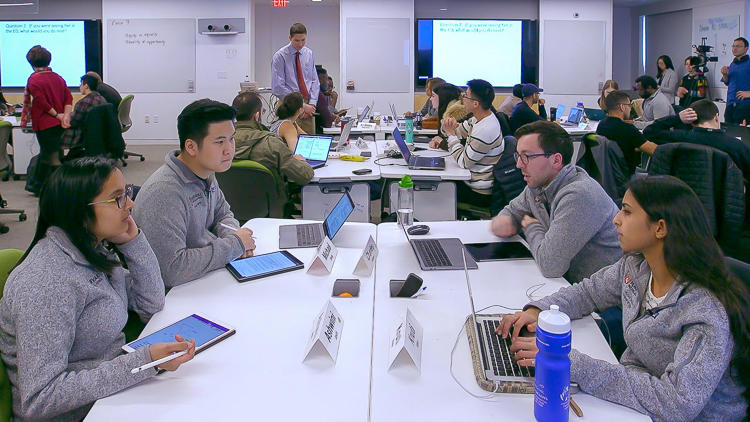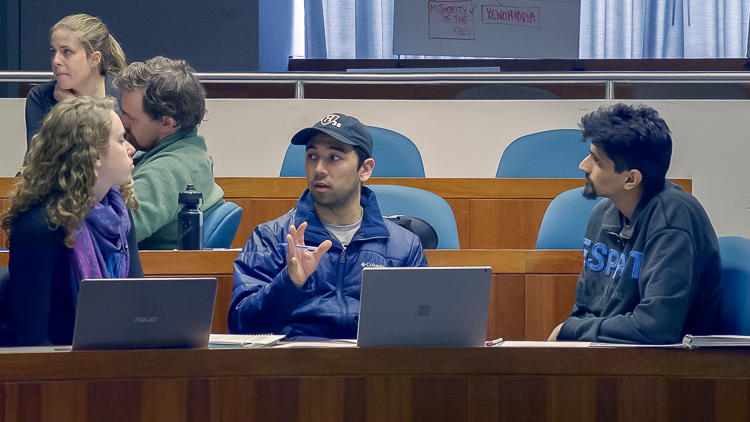It can be tempting to sit back and relax as an instructor when students are engaged in small group discussions. Doing so, however, keeps you from learning how students are understanding and engaging with content. Small-group discussion is an opportune time for you and your teaching team to get to know, compliment, complicate, and challenge your students’ thinking. In this video, Tina Grotzer discusses what she thinks about as she circulates and listens in on her students’ small group discussions.
Engaging with small groups to deepen discussions
Instructor
Tina Grotzer, Principal Research Scientist in Education
Student Group
Graduate
School
Harvard Graduate School of Education
Course
Applying Cognitive Science to Teaching and Learning
Group Size
35 students
- Reflect beforehand about what understandings you want your students to reach in their small groups. Design prompts that push students’ thinking to this level so you can broach these reflections as you circulate.
- As you circulate, be on the lookout for especially insightful or provocative comments in the small groups that you can invite students to share with the whole group.
- Small group discussions have been shown to have a range of academic benefits from increasing academic achievement, promoting favorable attitudes about science, math and engineering, and improved persistence in science, math, and engineering courses (Springer et al., 1999).
- In another Instructional Moves video, Timothy Patrick McCarthy describes how he decides when to intervene in a student-led discussion.
- Check out this comprehensive guide on implementing and monitoring small group work from the University of Michigan’s Center for Research on Learning and Teaching.




